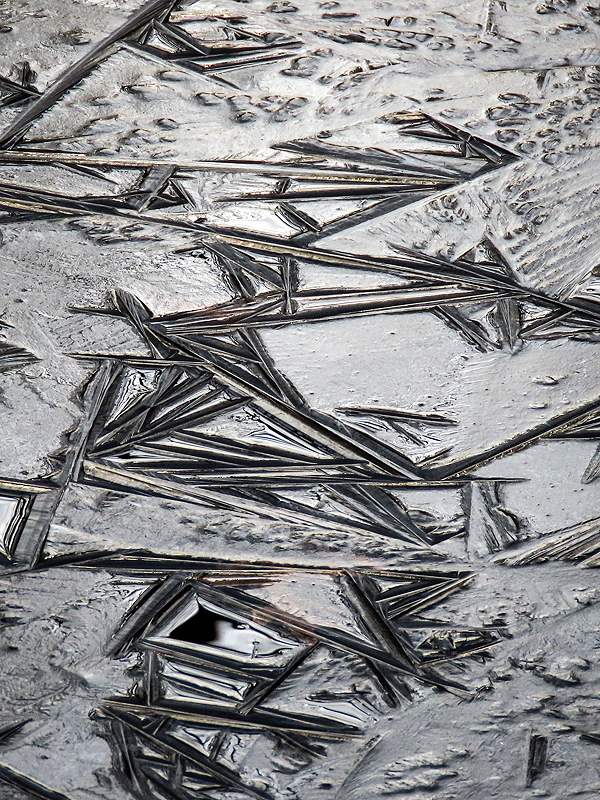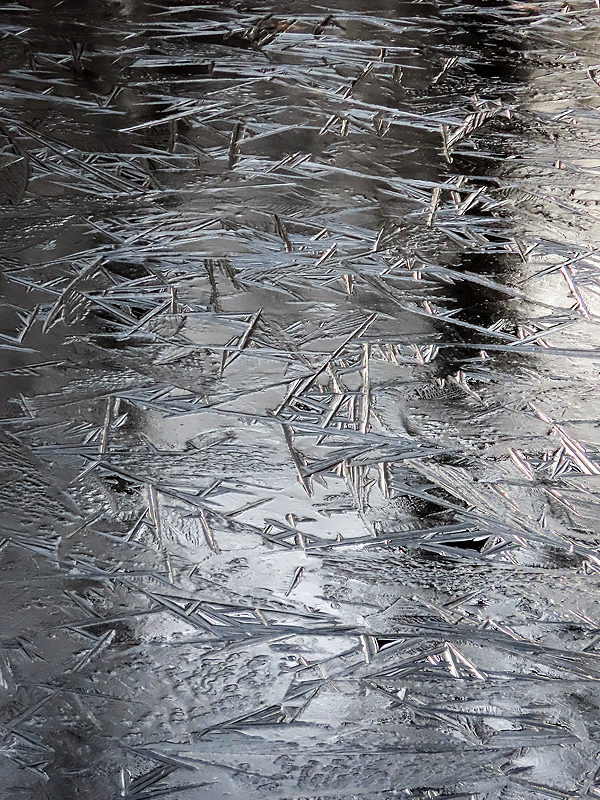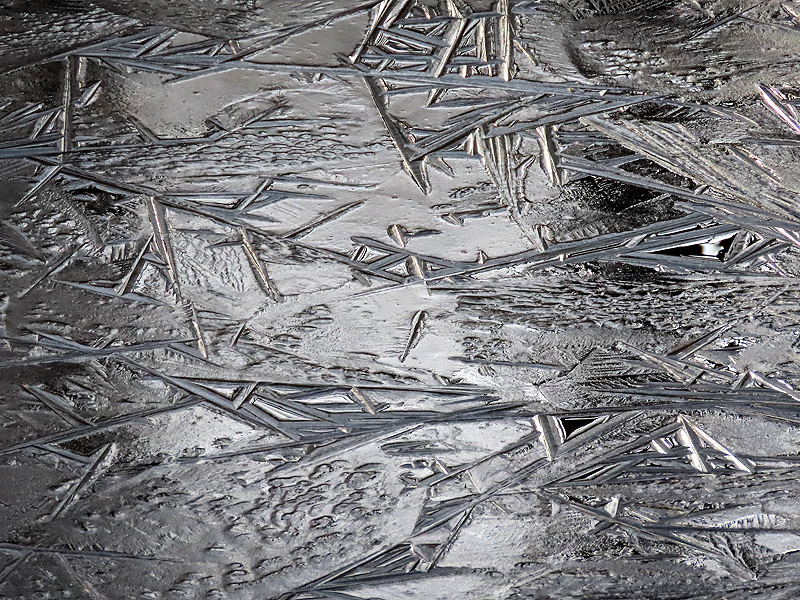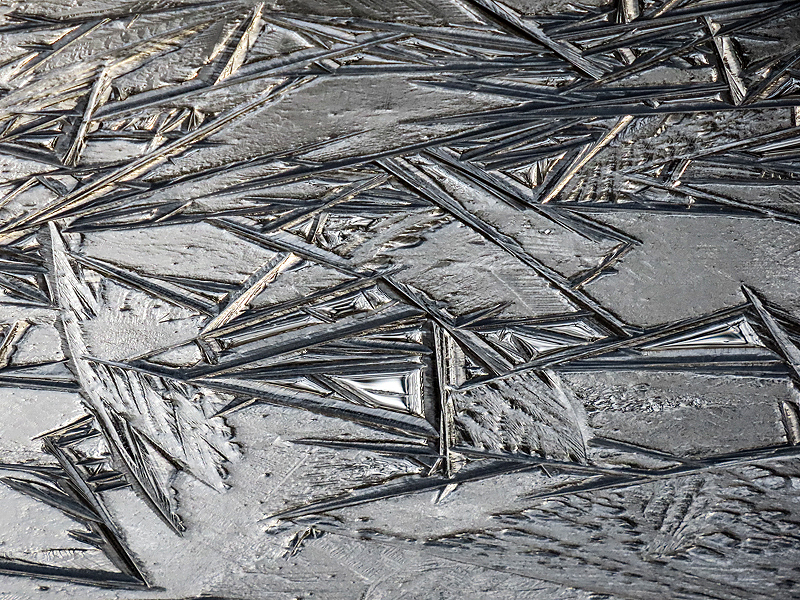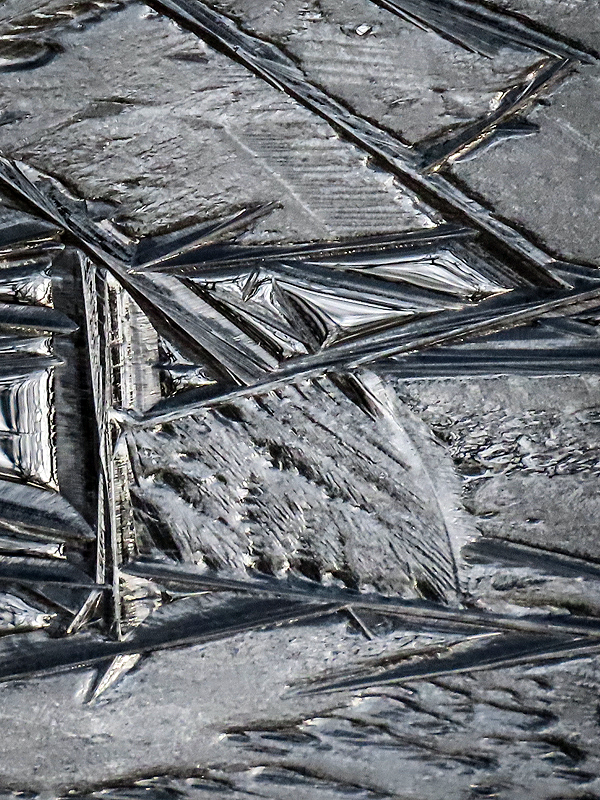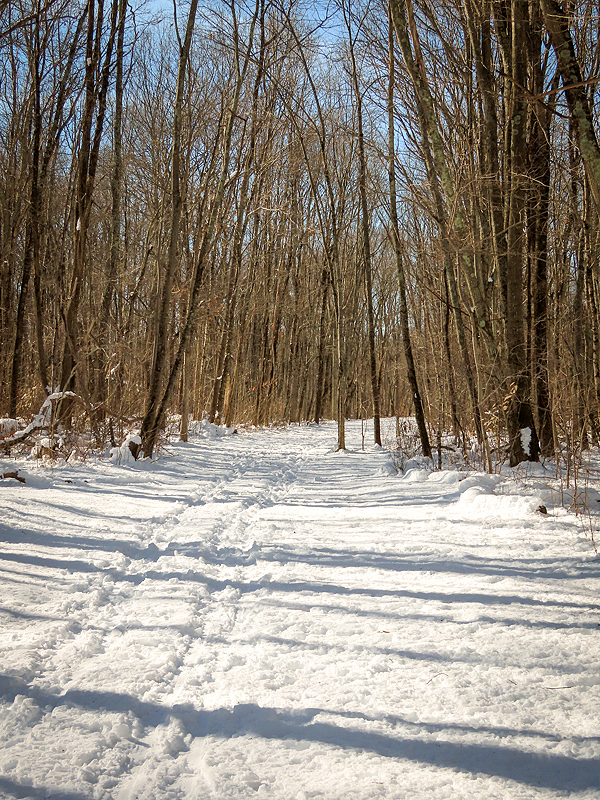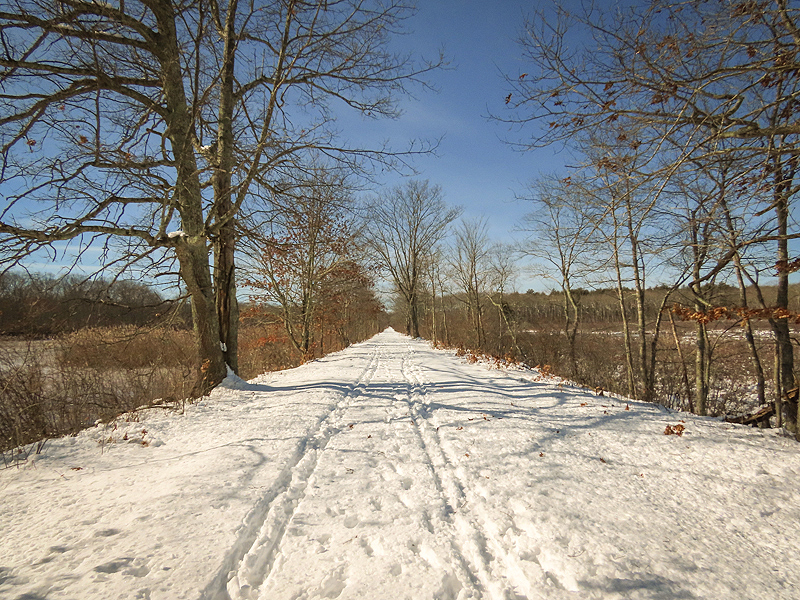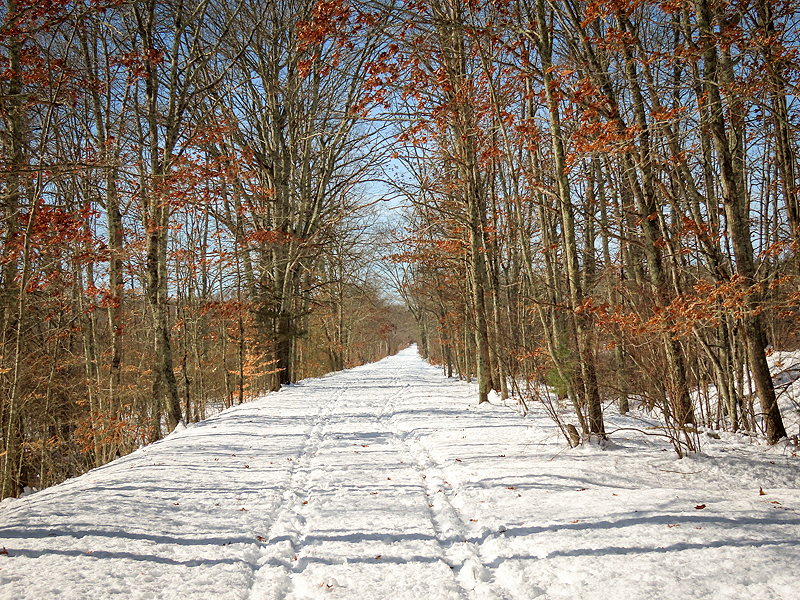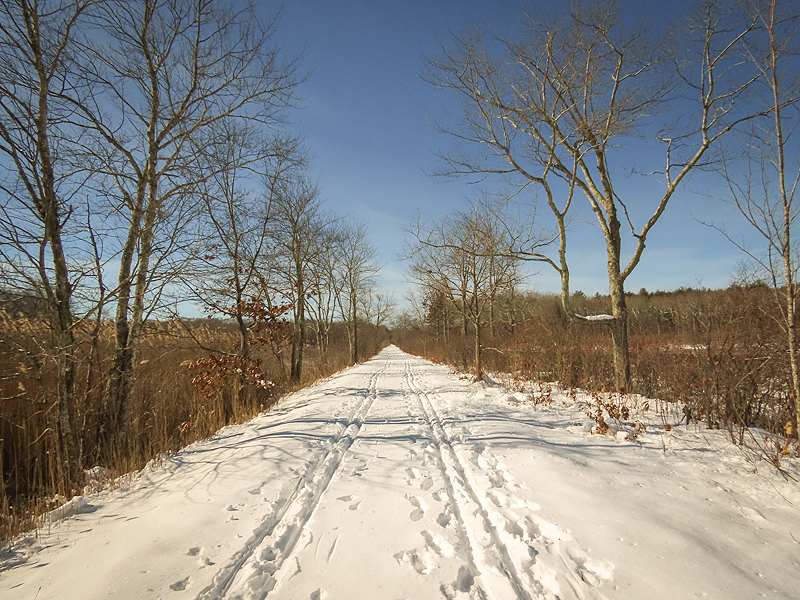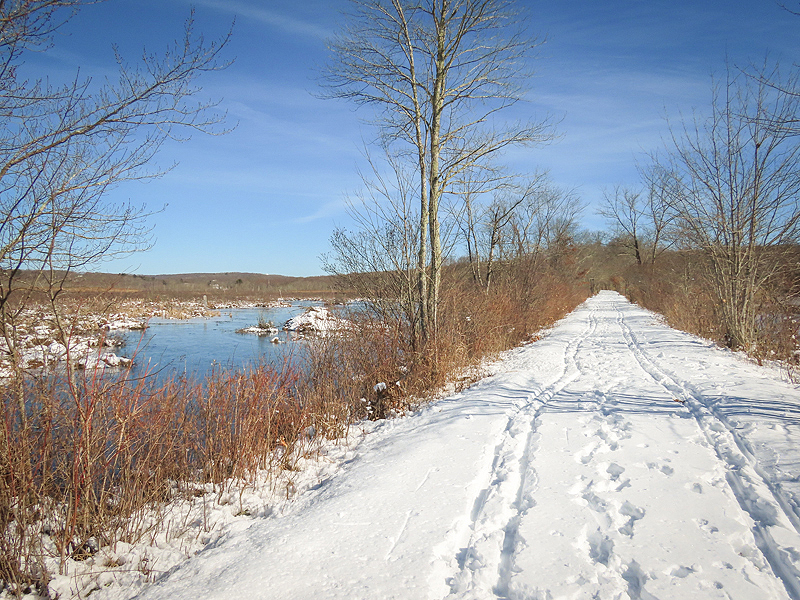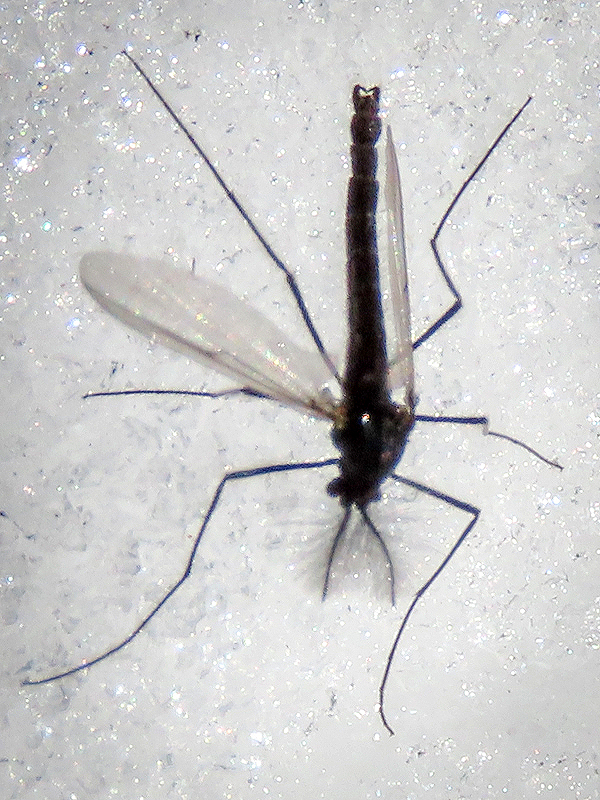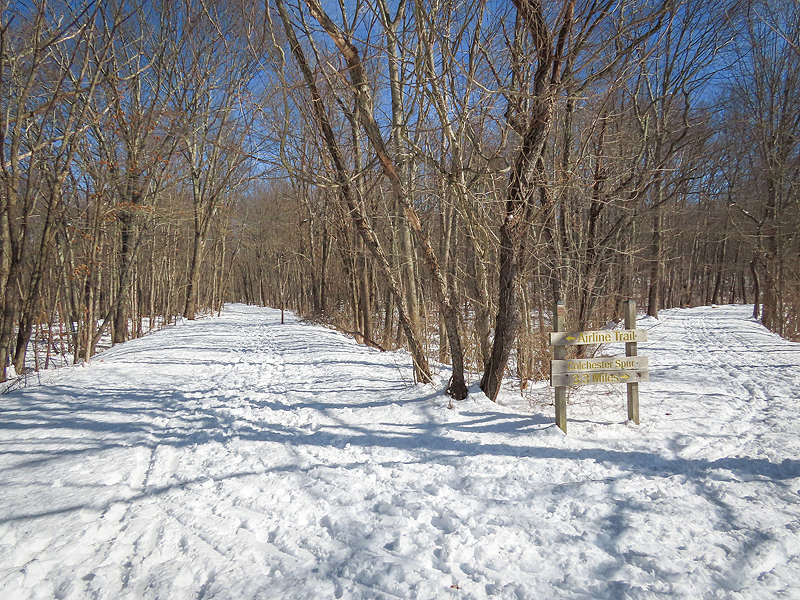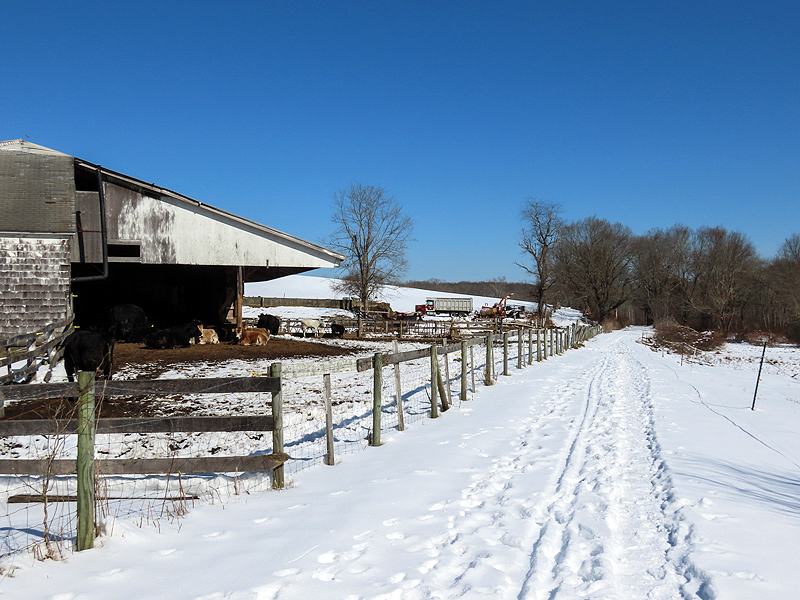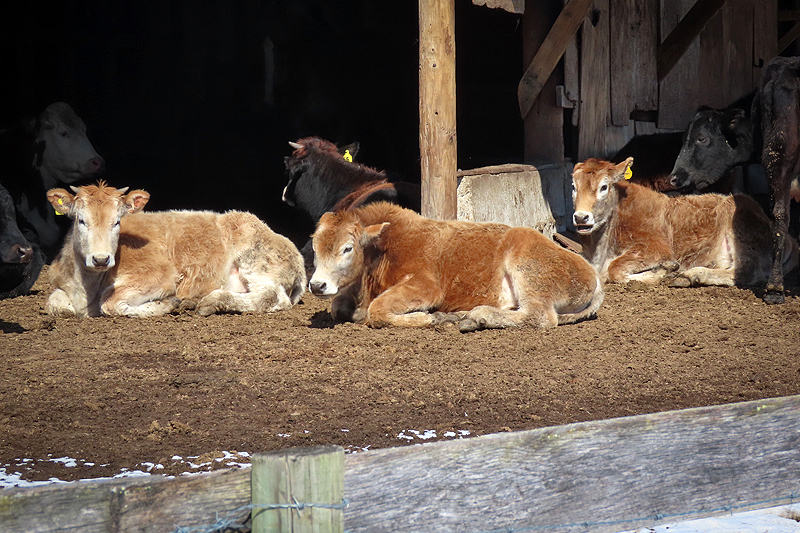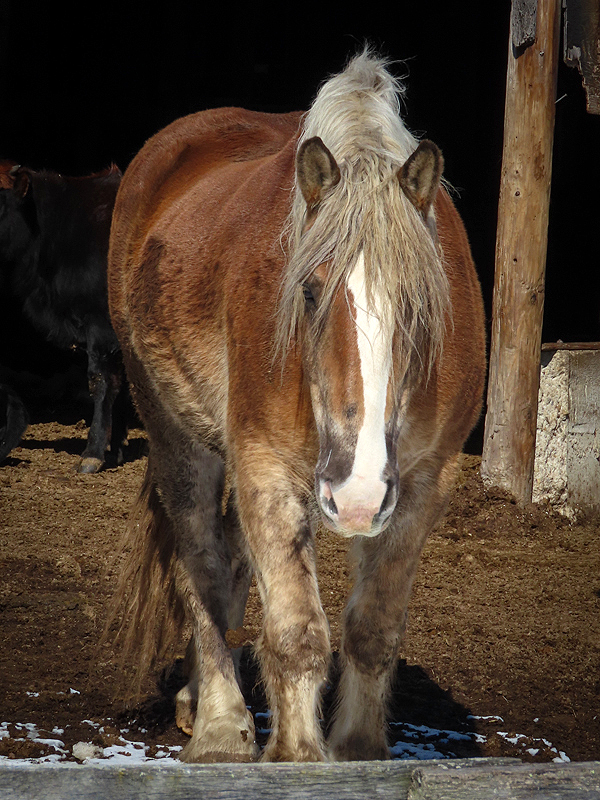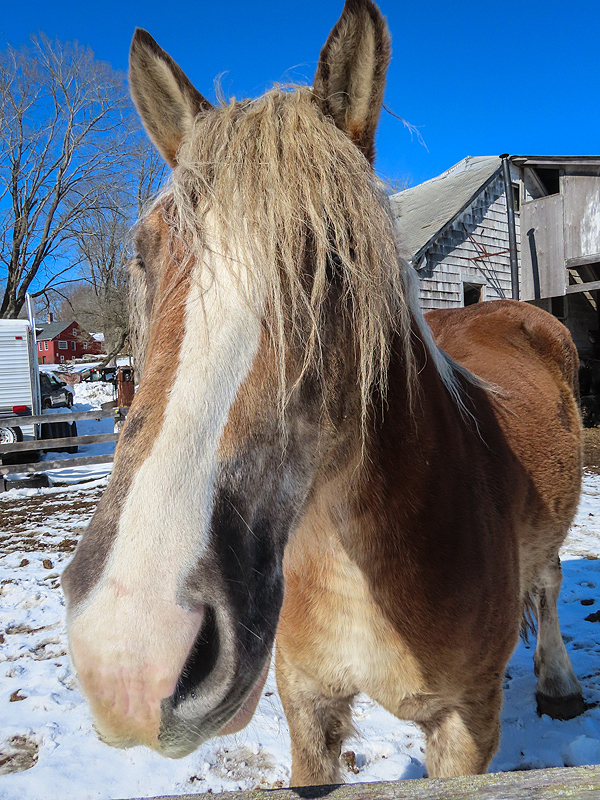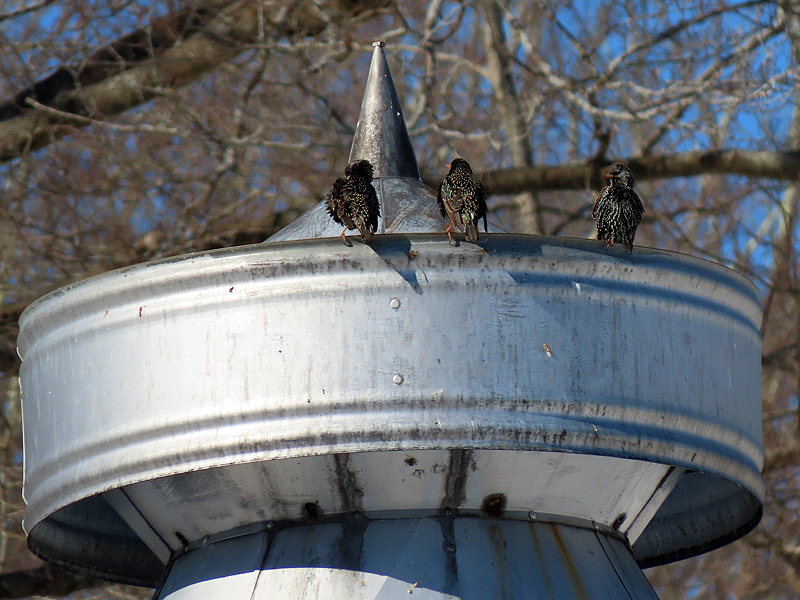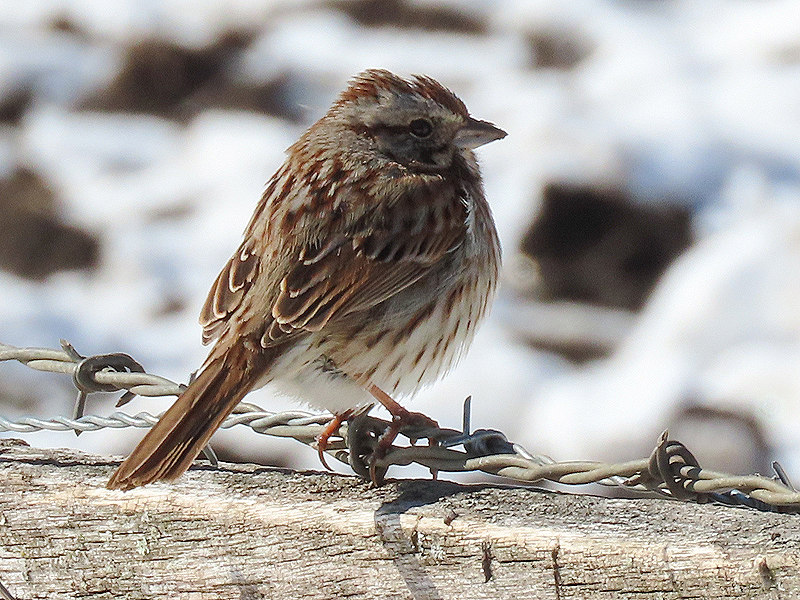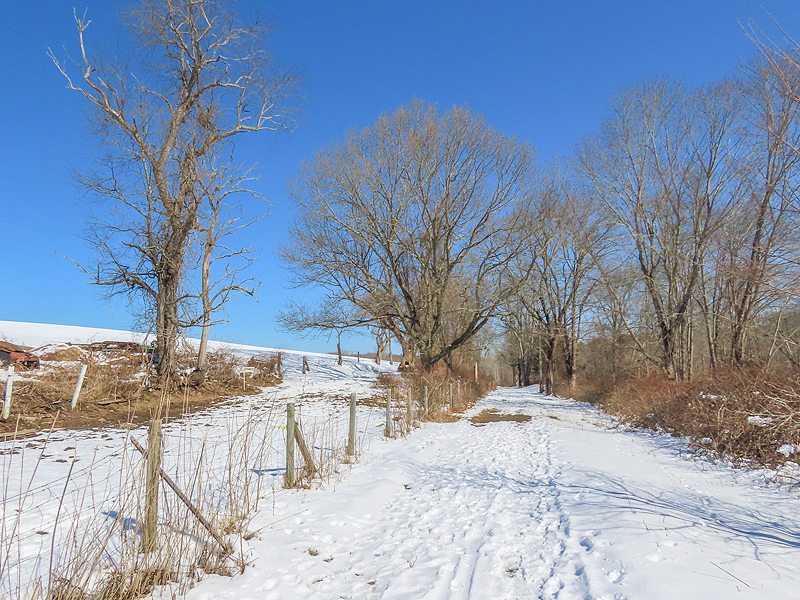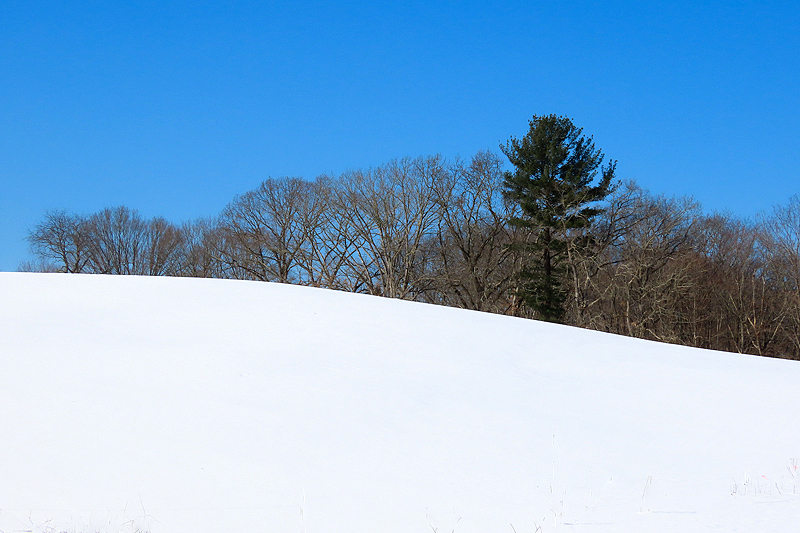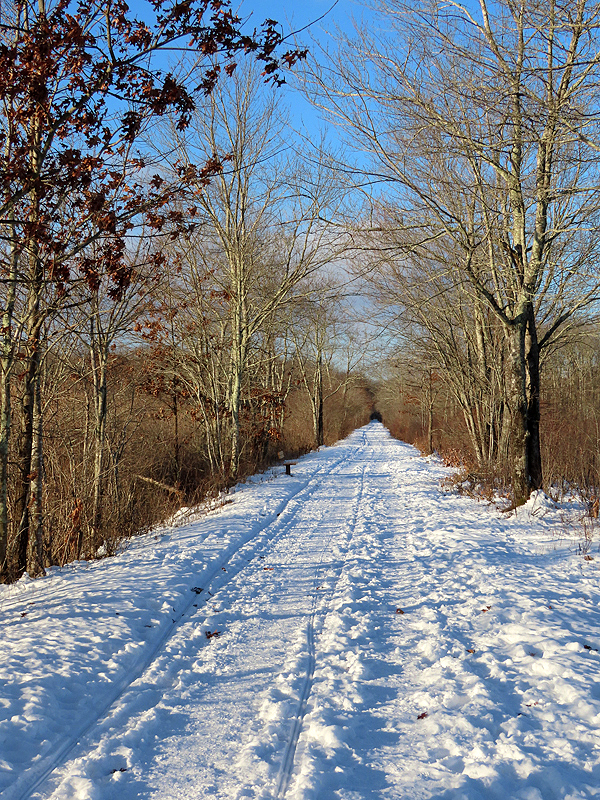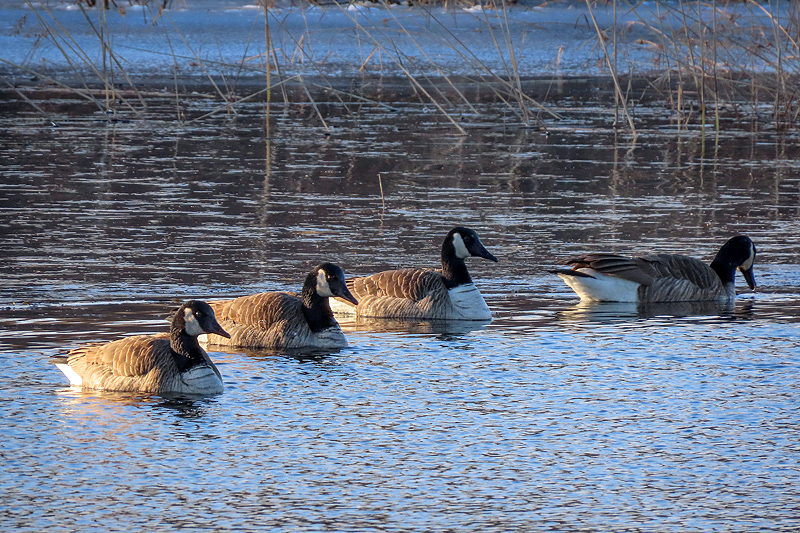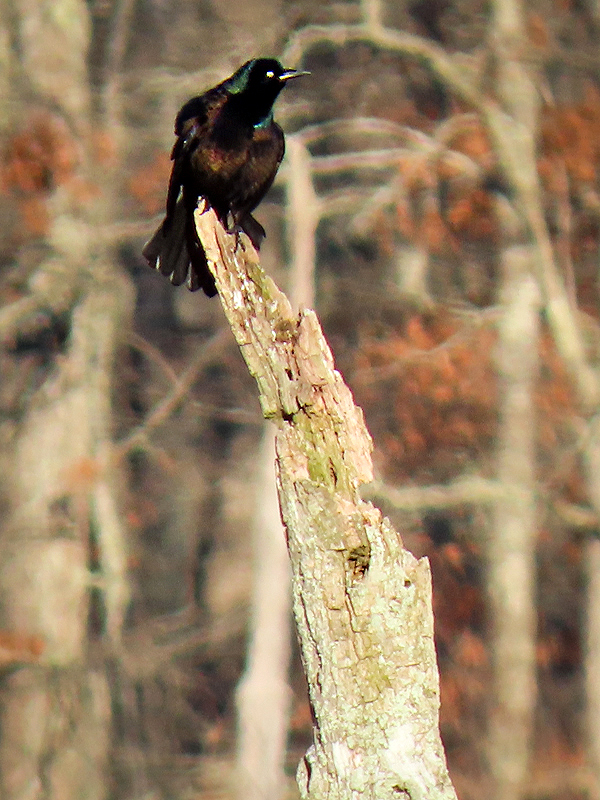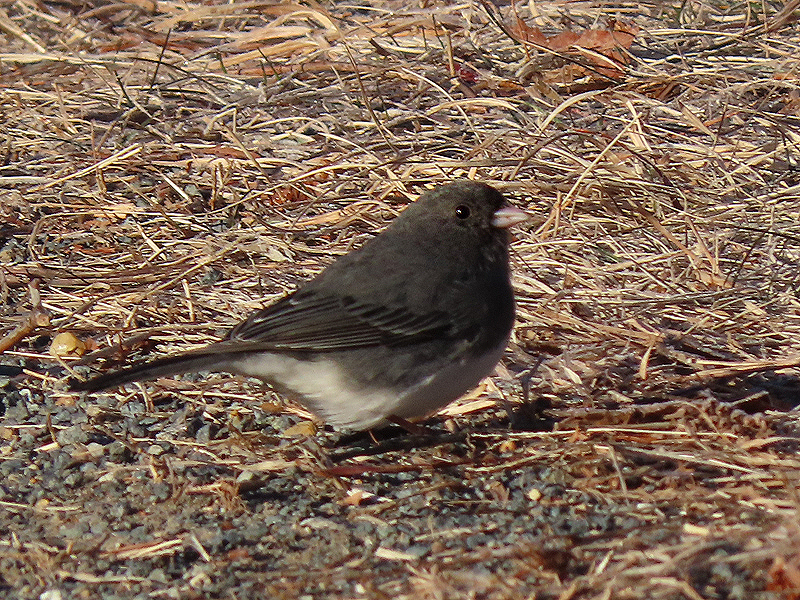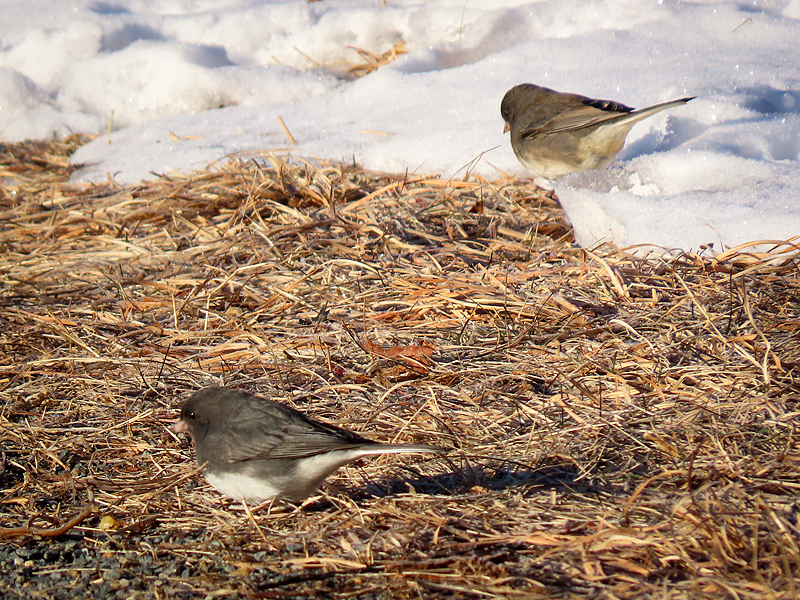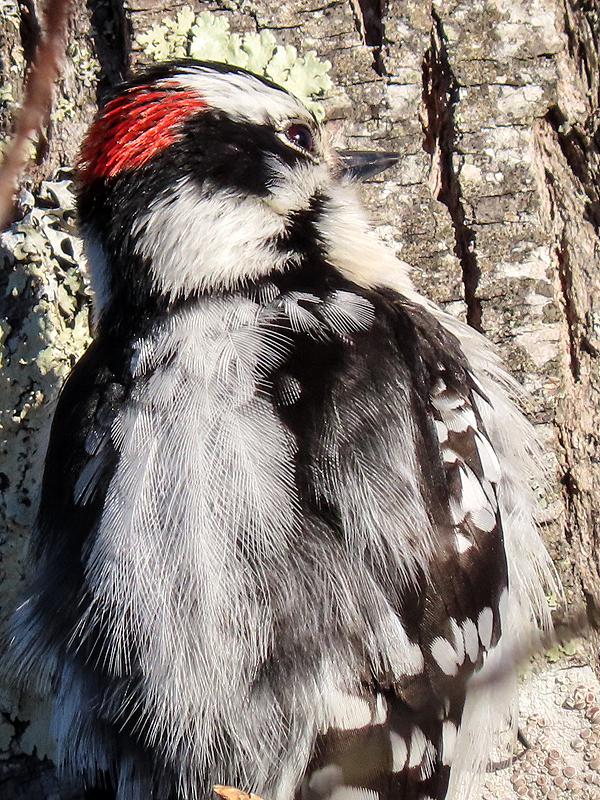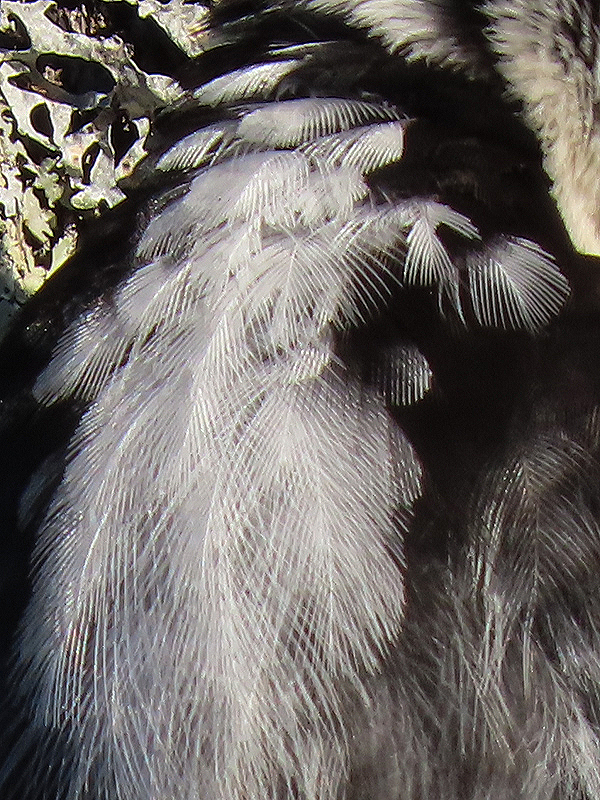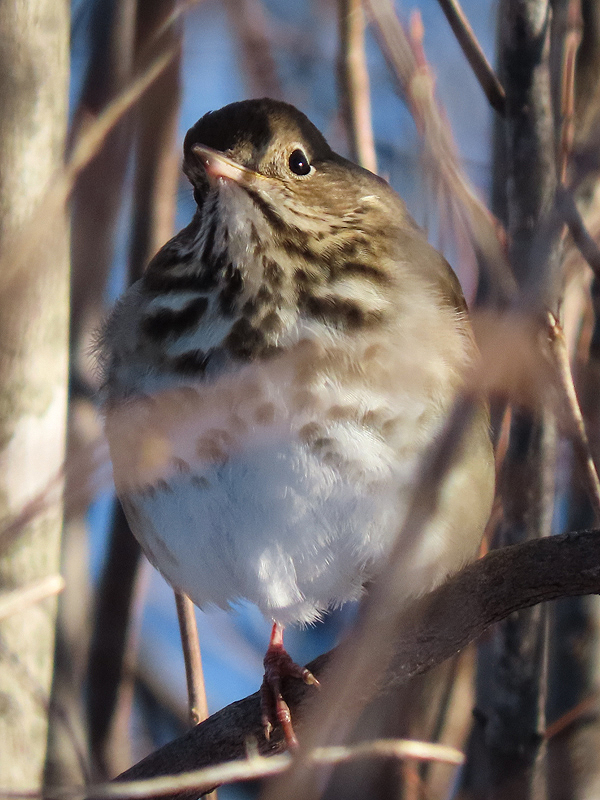Along the Air Line... 2023-2024 - Winter, Part 10 The Air Line Trail in Eastern Connecticut - Stan Malcolm Photos |
HOME: Air Line... 2024 Pages Menu Stan's FlickR Albums |
February 12th. Fresh ice on the marsh. |
|
|
|
|
|
|
February 15th. Back on the trail after heavy snow two days ago. |
|
|
|
|
|
|
|
Speckled Alder (Alder incana) fruits. |
A male Midge (Family Chironomidae). Some insects get active around 32 degrees and show up atop snow. |
|
February 18th. Too cold and windy for a morning walk but got out to the Cook Hill Road section midday. |
Animals took an interest in me. |
|
|
The horse came over to have his nose scratched. |
|
|
|
Lots of Rock Doves or Domestic Pigeons (Columba livia) soared around the farmyard. The small birds perched in the tree are European Starlings (Sturnus vulgaris). |
|
|
|
The Doves perch atop the silo and can get inside for shelter. |
Starlings perched on one of the roof vents. |
I got a glimpse of the dark spot on this Song Sparrow's (Melospiza melodia) breast before I took this photo where it can't be seen. |
There were a few American Crows (Corvus brachyrhyncos) around too. |
Heading a bit further east. |
|
February 19th. Snowmobiles in the last couple of days packed the snow for better walking. |
Some Canada Geese (Branta canadensis) found a patch of open water. |
|
|
Snow figures, one with a heart on its chest, the other a bunny. |
|
|
The geese took flight as I was walking back. |
|
February 20th. Thirteen degrees and still. Trail still in very good shape. |
Common Grackle (Quiscalus quiscula). |
Showing its colors. |
Dark-eyed Junco (Junco hyemalis). |
Lots of them around, as usual. |
Closeups of a male Downy Woodpecker (Picoides pubescens). |
|
|
I could use some ID help on this. My best guess is a Thrush. |
Thanks to Russ Smiley for identifying this as a Hermit Thrush (Catharus guttatus). He notes that other birds called thrushes all overwinter in Central and South America. |
Despite the cold, several male Red-winged Blackbirds (Agelius phoeniceus) were calling. |
|

